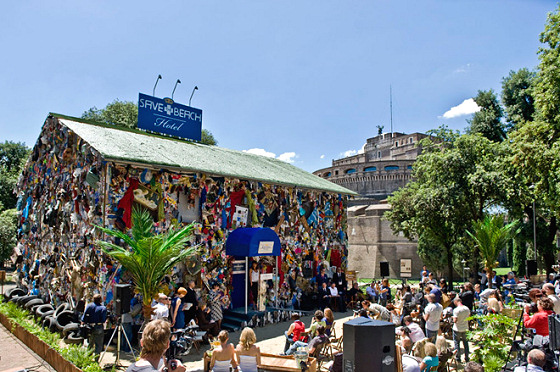A hotel made of trash collected in the beaches of Europe has been built and installed by the prestigious artist HA Schult, in the central Callao Square, in Madrid, Spain.
The "Corona Extra Save the Beach Hotel" is built with twelve tons of trash and offers visitors an experience with a strong environmental commitment.
HA Schult is famous for his work "Trash Men," which is composed of thousands of life-sized human figures completely made of trash.
This pioneering project wants to make people aware of the need to take care of the beaches of Europe.
Anyone can bring up a case of a beach in bad shape and upload a video or photo on the web page. The top model Helena Christensen has slept in the iconic hotel.
A vote is carried out each year among all the cases received to choose the beach that needs it the most.
In 2010, Corona Extra cleaned, with the help of volunteers, the Bay of Portmán beach in Murcia, and in 2009, the beach selected by Internet users was Capocotta, very close to Rome.
The project is supported by the international organization Blue Flag, the annual quality seal awarded by the Foundation of Environmental Education (FEE) to beaches that comply with some quality and care requirements.
A recent European survey emphasized that trash left behind by beach visitors is the main problem for our coasts, ahead of other factors such as pollution.
Corona has been connected with beaches and surfers for a long time.
